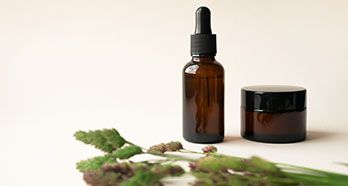Foods that improve blood circulation
Are you looking for ways to improve your blood circulation? A change in your diet may be the answer. Here, we explore what might cause poor blood circulation, why improving your blood circulation is essential, and the foods that will enhance it while keeping you healthy.
Poor Blood Circulation - What Are The Causes?
Here are some of the main causes of poor blood circulation:
Atherosclerosis - Plaque buildup in the arteries restricts blood flow and oxygen delivery.
Blood clots - Clots can partially or fully block blood flow through veins or arteries.
Varicose veins - Twisting and enlarging of veins can pool blood and reduce circulation.
Arterial disease - Conditions like peripheral artery disease narrow arteries, limiting blood flow.
Diabetes - High blood sugar damages blood vessels and causes restriction.
Obesity - Excess body fat puts pressure on blood vessels.
Smoking - Smoking hardens arteries and decreases oxygen in the blood.
Sedentary lifestyle - Lack of physical activity causes stiff vessels and weak muscles.
Chronic inflammation - Swelling of blood vessel lining reduces blood flow.
Nutrient deficiencies - Lack of nutrients impacts red blood cell function.
Dehydration - Not drinking enough water thickens the blood.
Compression - External pressure on veins and arteries from injuries or obesity can lead to blood flow restrictions.
Heart conditions - Weak heart muscle or irregular rhythms reduce pumping.
Nerve damage - Problems with nerve signals to vessels can constrict blood flow.
Raynaud's disease - Exaggerated spasms in extremities lessen circulation.
Medications - Some drugs, like diuretics or beta blockers, can affect flow.
Pregnancy - Hormonal changes and increased blood volume can stress the circulatory system.
Why is Poor Blood Circulation a Problem For Your Health?
Tissue and cell damage - Lack of nutrient-rich and oxygenated blood damages tissues and cells, especially in the extremities. This can lead to numbness, tingling, pain, sores, infections and eventually tissue death.
Organ dysfunction - Reduced blood flow to vital organs like the heart, brain, and kidneys impairs their ability to function properly. It can contribute to heart disease, cognitive issues, kidney failure and stroke.
Pain - Inadequate blood and oxygen supply causes painful muscle cramps during activity. Numerous areas can be affected, such as the legs and arms.
Slower healing - Circulation brings nutrients and immune factors needed for healing wounds and injuries. Poor circulation delays the healing process.
Cold extremities - Restricted peripheral circulation makes the limbs and extremities perpetually cold. This interferes with dexterity.
Skin discolouration - Blood flow issues manifest as pale, blueish or dusky skin in the arms and legs. Skin ulcers may also develop.
Edema - Poor venous circulation causes fluid buildup and swelling in tissues, typically the lower legs.
High blood pressure - Hardened, narrow arteries and vessels increase resistance to blood flow, raising blood pressure.
Fatigue - Lack of oxygenated blood makes sustaining energy levels and physical activities harder.
Infection - Impaired immune response due to poor circulation increases vulnerability to infections.
Medication effects - Reduced blood flow to the liver and kidneys impairs medication processing.
In essence, poor circulation starves cells throughout the body of oxygen and nutrients, which can lead to tissue damage, pain, reduced immunity, and multi-system organ failure if left untreated.
Suffering From Poor Blood Circulation? What Are The Options for Treatment?
The underlying cause determines the best treatment plan, whether it be lifestyle changes, medications, supplements, or procedures to improve blood flow. The good news is that there are lots of options for anyone who is struggling with poor blood circulation and is looking for ways to improve it, such as changing your diet which has been proven to help blood flow around the body.
Top Foods That Improve Blood Circulation
Here are some of the top scientifically proven foods to eat to help improve blood flow:
Beetroot
Nitrates in beetroot get converted to nitric oxide, improving vessel dilation and blood flow.
Walnuts
Alpha-linolenic acid, antioxidants, and L-arginine in walnuts enhance blood flow.
Fatty Fish
Omega-3 fatty acids in fish like salmon, mackerel and tuna reduce inflammation and risk of blood clots.
Turmeric
Curcumin or Turmeric, has anti-inflammatory effects and anticoagulant activity to improve circulation.
Pomegranates
Polyphenols in pomegranates increase nitric oxide production and support healthy arteries.
Dark Chocolate
Dark Chocolate is High in flavonoids to promote circulation and lower blood pressure.
Citrus Fruits
Vitamin C boosts nitric oxide, relaxes blood vessels, and helps prevent damaging plaque buildup.
Garlic
Allicin in Garlic breaks down to produce hydrogen sulphide, which expands blood vessels.
Cayenne pepper/Chili
![]()
Capsaicin in cayenne pepper inhibits COX enzymes to reduce inflammation and improve blood flow.
Tomatoes
The lycopene content in tomatoes protects vessels from damage that can restrict circulation.
Spinach
Nitrates and arginine in spinach improve blood flow and artery flexibility.
Olive Oil
Monounsaturated fats in olive oil lower blood pressure and maintain vessel elasticity for circulation.
Of course, as well as eating the right foods, avoiding the wrong ones is also essential! Unhealthy fats, excessive alcohol and caffeine, and overdoing refined sugars and carbohydrates can also influence how the blood flows around the body and are best avoided when trying to improve it.
Try These Foods That Improve Blood Circulation at Baldwins
In general, fruits, vegetables, spices, healthy fats and lean proteins have proven benefits for blood flow thanks to their anti-inflammatory, nitric oxide-boosting, and plaque-preventing effects. So the more of these foods that improve blood circulation you can add to your day-to-day diet, the better!







 Looking for Qualified Advice on Herbs & Supplements?
Read our health guides, quick tips and popular posts on a range of health conditions, products & fitness
Looking for Qualified Advice on Herbs & Supplements?
Read our health guides, quick tips and popular posts on a range of health conditions, products & fitness
 At number 64, our Walworth Road Shops are featured in Time out London’s
100 best shops and we couldn’t be more delighted!
At number 64, our Walworth Road Shops are featured in Time out London’s
100 best shops and we couldn’t be more delighted!

 View our Catalogue online.
It is stocked full of our latest oils, beauty products, health foods & gifts.
View our Catalogue online.
It is stocked full of our latest oils, beauty products, health foods & gifts.